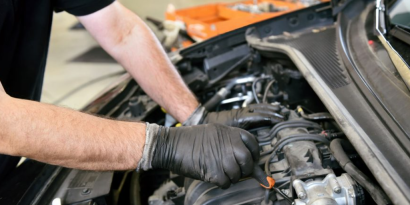Head bolt tightening is one of the most critical and sensitive steps in any automotive engine assembly or maintenance process. Although it may seem straightforward, it involves science, precision, and a keen technical sense to guarantee proper sealing, consistent performance, and the longevity of components. A mistake during head bolt tightening can lead to costly consequences, such as leaks, mechanical failures, and even engine loss.
In this article, you’ll gain an in-depth understanding of how different head bolt tightening methods work, which precautions are essential during the process, and the direct relationship between these practices and engine life. Don’t miss our FAQ section—and see how RIO, a benchmark in high-precision automotive solutions since 1946, can support your business.
Understanding head bolt tightening methods
Securing the cylinder head to the engine block requires the controlled application of force on the bolts, ensuring the part is perfectly aligned, sealed, and ready to withstand high pressures. Tightening methods are standardized by international norms and use different measurement techniques:
Torque (kgf or Nm): Torque involves applying a twisting force, typically via a torque wrench. The recommended value, found in technical manuals, can be expressed in kilogram-force (kgf) or—more commonly today—in Newton meters (Nm). This value indicates how much force should be used to ensure the bolt is properly tightened, preventing excessive looseness or even bolt breakage due to too much force.
Angle tightening: Angle tightening takes place after an initial torque pre-tightening. In this phase, a special tool is used to rotate the bolt or nut by a specific number of degrees (e.g., 90°, 180°, etc.). This method ensures that, regardless of minor variations in thread friction or material, the bolt stretches exactly as specified, promoting ideal clamping force between parts.
Unit conversion: Many mechanics still encounter different standards daily. Knowing basic conversions (e.g., 1 Kgf.m ≅ 9.8 Nm, 1 Lb.ft ≅ 1.355 Nm) is crucial to apply the correct value when your available tool doesn’t match the manual.
ATTENTION!
Do not attempt to directly convert tightening angles to torque values (kgf or Nm), as these are entirely different measurements and depend on many factors: thread geometry, material quality, surface condition, etc.
Why the correct method makes all the difference for your engine
Whether it’s for trucks, agricultural machinery, motorcycles, or passenger engines, using the correct technique avoids serious problems such as:
- Oil and fluid leaks due to improper sealing
- Bolt loosening or breakage
- Deformation of vital engine components
- Reduced durability and compromised performance
That’s why following the manufacturer’s technical instructions—which specify whether to use torque or angle tightening—is key to safe assembly and full performance, especially for high-precision parts, like those produced by RIO.
Essential steps before tightening
- Bolt inspection: Reusing deformed, rusted, damaged, or undersized bolts is extremely risky. Always replace bolts in these cases.
- Cleaning and light lubrication: Bolts and their threads must be clean. A thin layer of engine oil reduces friction, allowing for effective torque. Let oil drain for about 30 minutes before use to avoid excess.
- Integrated washers: Lubricate the base of the washer, never the face in contact with the cylinder head.
- Check length: Bolts shorter than specified lose the ability to correctly clamp the cylinder head.
Frequently asked questions about head bolt tightening
1. Why shouldn’t I reuse stretch bolts?
Stretch bolts, subjected to the angle tightening method, are pulled beyond their elastic limit and undergo slight irreversible deformation. When retightened, they lose their designed clamping ability, increasing the risk of leaks and failures.
2. Can I substitute angle tightening for an equivalent torque in kgf?
No. There is no direct or charted relationship between tightening angles and kgf. The required method depends on the specific bolt type, material, friction, and application.
3. What happens if I don’t follow the specified tightening sequence?
The manufacturer’s tightening sequence ensures the cylinder head seats evenly. Ignoring it can cause warping or leaks.
4. Can old tools be used for angle tightening?
No. Angle tightening requires a goniometer or specific digital tools that ensure precise measurement of each bolt’s rotation angle.
5. Why is it important to tighten with a cold engine?
Components expand at high temperatures. Tightening with a cold engine ensures correct adjustment of parts, free from thermal distortion.
RIO: your partner in automotive maintenance parts and solutions
Investing in correct processes also requires reliable, high-precision parts. RIO, a national leader with almost eight decades of history, offers products such as head bolts, gaskets, liners, guides, valve seats, valves, tappets, engine bearings, and many other essential components. We supply light vehicles, trucks, tractors, buses, marine, rail, and motorcycle applications, distributing throughout Brazil and to over 28 countries.
Aim for maximum performance and safety for every engine in your workshop! Discover RIO’s product portfolio and ensure cutting-edge quality and technology in every repair.
Talk to our technical team and find the best automotive parts solution for cylinder head maintenance and the entire propulsion system. Quality that travels with you for thousands of kilometers!





